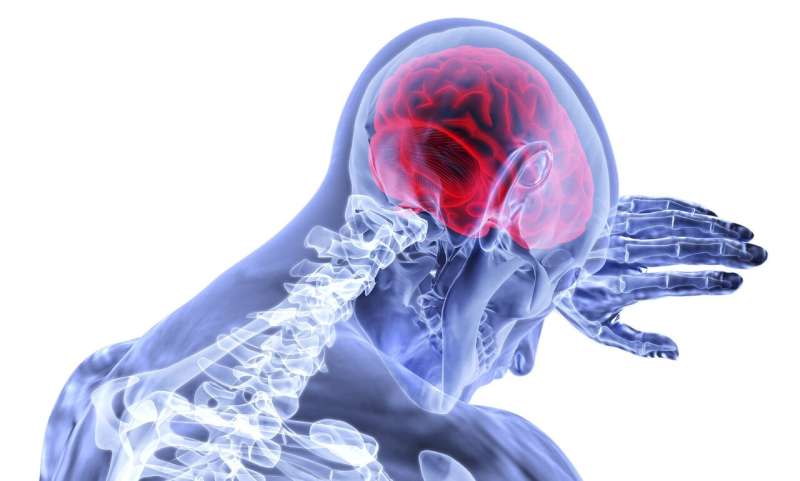Neurologist calls for broad changes in stroke care during COVID-19

Broad modifications to current standards for treating acute stroke patients during the COVID-19 pandemic may be needed to preserve health care resources, limit disease spread and ensure optimal care, according to a Loyola Medicine neurologist.
"Doctors are seeing a rise in COVID-19 patients of all ages suffering from stroke and other vascular complications, as the COVID-19 virus overwhelms the health care system," said Jose Biller, MD, chairperson of neurology at Loyola University Medical Center, and professor, Loyola University Chicago Stritch School of Medicine, and co-author of a new editorial, "Acute Stroke Care in the Coronavirus 2019 Pandemic."
"COVID-19 may increase the risk of stroke as a result of several mechanisms, including enhanced inflammatory response, increased blood clotting tendencies, and damage of the inner layers of the blood vessels (endothelial damage)," said Dr. Biller. In general, the majority of stroke patients are older and have underlying medical conditions associated not only with risk for acute ischemic stroke (AIS), but also poor outcomes associated with COVID-19.
Dr. Biller says new guidelines are needed to safely manage stroke patients, both with and without COVID-19, within the limitations of strained health systems during this "ferocious novel pandemic."
"We believe that it is crucial for the stroke community to relax guidelines and stroke pathways while continuously providing high quality of care, including treatment algorithms, post intravenous thrombolysis monitoring, diagnostic work up, disposition planning, prevention measures, in order to optimally care for stroke patients while minimizing the chances of contributing to the rapid spread of COVID-19," according to the editorial, co-authored by Rima M. Dafer, MD, MPH, and Nicholas D. Osteraas, MD, MS, both of Rush University Medical Center, and appearing in the Journal of Stroke and Cerebrovascular Diseases.
The recommendations pertain to all aspects and stages of care, and include the following highlights:
- Prehospitalization. Patients or loved ones should continue to call 911 to report a stroke. In addition to standard triage, emergency medical system (EMS) personnel should screen patients over the phone for COVID-19 symptoms. Telemedicine should be considered for patients with low suspicion of stroke, or mild symptoms with no potential indication for intervention. All patients with acute stroke symptoms should be treated as suspected or possible COVID-19 patients.
- Emergency Room Evaluation. In the emergency room, patients should be screened for COVID-19 prior to evaluation by the stroke team. All patients should wear a mask.
- Hospitalization. Hospitals should designate isolated units for stroke care. Patients receiving intravenous chemical thrombolysis (a common stroke treatment involving an intravenous injection of drugs directly to the blood clot) may be monitored virtually with two-way video conferencing to minimize staff infection.
- Rehabilitation Planning. Rehabilitation for stroke patients can include physical, occupational, and speech therapy, along with other rehabilitation. All therapists and health care workers caring for COVID-19 patients should wear appropriate protective gear. Whenever appropriate, therapy services should emphasize patient exercises that can used at home.
- Family Members. As many hospitals have restricted visitors during COVID-19, extra effort will need to be made to reach families by phone to discuss a patient's condition, treatment options and discharge planning. Exceptions to the visitor policy, such as discussions regarding end-of-life care, should be made when appropriate.
- Transfers. Stroke care often involves networks of hospitals; commonly a comprehensive "hub" with multiple smaller hospitals or "spoke" sites which transfer stroke patients to the "hub" for emergency treatment or Intensive Care Unit (ICU) care. Tele-stroke should be encouraged to evaluate patients and to prevent unnecessary transfers. For AIS patients, neuroimaging and COVID-19 screening should be obtained at the smaller, spoke site hospital before a patient is transferred to a larger medical center.
- Discharge Planning. Discharges to acute rehabilitation institutions and long-term facilities have been delayed due to concerns about the spread of COVID-19 infections in long-term care facilities and nursing homes. Hospitals may need to designate rehabilitation beds for patients who do not qualify for transfer to acute inpatient facilities, as well as discussing possible discharge to home when medically stable and appropriate until the pandemic is under control.
Finally, the article recommends establishing stroke networks within cities, as well as collaboration between institutions "as the surge of COVID-19 worsens." This should include "collaborations among stroke networks to establish a rotating weekly coverage for acute stroke care in a specified geographic area; thus, both freeing hospital resources and releasing stroke call responsibilities, and allowing these physicians to help in caring for patients on the COVID-19 units."
More information: Rima M. Dafer et al, Acute Stroke Care in the Coronavirus Disease 2019 Pandemic, Journal of Stroke and Cerebrovascular Diseases (2020). DOI: 10.1016/j.jstrokecerebrovasdis.2020.104881





















